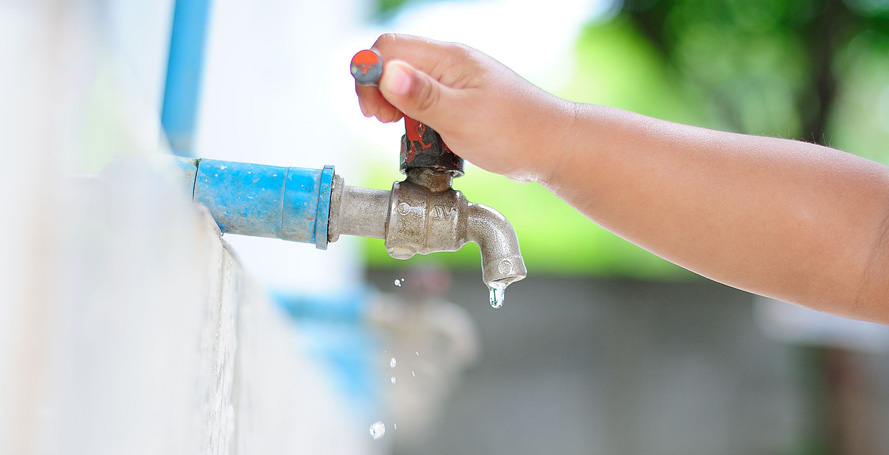Water Conservation Tips That Will Save You Money

Every day we shower, brush our teeth, wash dishes, and use the toilet. Several times a month we might even do laundry in our homes. Studies show that for indoor water use alone, 41% is used in flushing toilets and 33% is used for washing. What’s it all mean? Well, higher water consumption = higher water bills. The good news is, if you can reduce water consumption by 1000 gallons per month, you can save an average of $140 a year. Check out the following water conservation tips to help you achieve this goal:
Use Low-Flow Faucet Aerators
Much of the water that comes out of the standard kitchen and bathroom faucets flow right down the drain. Imagine how much water is being wasted when such faucets typically use between 4 and 7 gallons per minute! Installing a low-flow faucet aerator will help conserve water. These devices reduce the flow of water by adding air to the water spray. Aerators also minimize splashing and increase coverage area, thereby improving overall faucet performance. Tap water use can be reduced up to 50%, saving 1100 to 1500 gallons of water per month! Faucet aerators cost less than $10 and are fairly simple to install.
Use Low-Flow Shower Heads
A five-minute shower expends up to 40 gallons of water. Why? Because your basic showerhead uses 5 to 8 gallons per minute. Replacing your old, standard shower heads with a new, more efficient low-flow design will cut down your overall expenditure of water to 12.5 gallons, using just 2.5 gallons of water per minute! Going one step further is the ultra low-flow showerhead, which uses only 1.8 to 1.5 gallons of water per minute and reduces overall water usage to 7.5 gallons per shower.
Limiting your shower time to five minutes and using efficient low-flow showerheads will help to reduce your water usage by 50%, saving up to 1100 gallons per month. Low-flow showerheads cost from $8 to $50; a worthy investment.
Use Low-Flush Toilet
Most standard toilets manufactured before 2002 use 3.5 gallons of water per flush. Since then, all newly manufactured toilets (known as low-flush toilets) use only 1.6 gallons per flush. This means, if you have a pre-2002 model, you can save up to 1300 gallons of water per month by replacing it with a low-flush design. Low-flush options include a 1.6 gallon-per flush (GPF), 1.28 GPF, or a dual-flush model that adjusts its flushing power depending on whether the waste is liquid or solid.
If a new fixture installation is simply out of the budget, you can alternatively install a toilet retrofit device on an older toilet which can cut your water usage by 30% and save 270 gallons per month.
Cover Your Water Heater
If you have a large water heater in your home, covering it up with a water heater blanket will save you money on your energy bill. The blankets provide insulation which helps the heater to maintain higher temperatures without exerting as much energy. This is especially important if your water heater is located in unheated areas, such as basements or garages.
Appliance Maintenance
It’s important to keep all appliances, such as washing machines, dishwashers, and water heaters, clean and in good working order. These appliances are responsible for a substantial amount of daily water and energy usage, and leaks or blockages can use up more water than you might realize.
Also, note that the average life of a water heater is eleven years old, so once yours reaches ten years it’s recommended that you start comparing prices on new machines. The idea is to get ahead of any failings your current machine might soon experience.
Finally, waiting to run full loads, rather than several partial loads, through the dishwasher and washing machine will also save you money.
